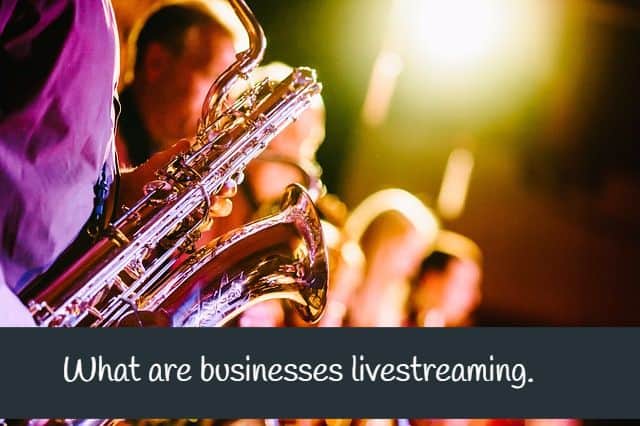
What Is a Sales Funnel of Offers and Why Do You Need One?
Selling products and services online gives you access to a worldwide audience. But this doesn’t automatically result in massive sales and a successful business.
It takes hard work and effort to secure customers and make sales. That’s why it is especially frustrating when you dedicate time, energy, and resources into promoting your offers and see minimal results.
It’s not enough to inundate your audience with messaging and links to your offer in the hopes that they’ll click and buy.
Successful internet-based businesses rely on the power of sales funnels to move their products and services. And they know the best sales funnels are fueled by valuable, targeted, and well-timed offers. Sales funnels automate the sales process and put you in control of what your prospects see and when. Create a sales funnel of multiple offers and you’ll quickly start to see greater revenue and results.
What Is a Sales Funnel of Offers?
A sales funnel is a visualization or map of the journey your target customer takes from the initial awareness stage to the final purchase. It is the process prospects go through to become a customer.
It’s called a funnel because it’s wide at the top (the sales funnel entry point) and gradually narrows as the customer moves toward your core offer. The idea is to cast a wide net at first, attracting casual and serious prospects alike. You then present them with offers that will either move people down the funnel towards purchase or, eventually, remove them.
The types of offers you present, and where you place them, is key to your funnel’s success. Some offer types include a lead magnet, low-ticket offer, one-time offer, order bump, upsell, and downsell. This list isn’t comprehensive, but it provides the foundation for all successful funnels.
The point of these offers is to qualify leads for your core offer. Through your prospects’ reaction to these offers, you can learn who will buy from you and who will not. You can then weed out those who are not interested in buying anything.
What Types of Offers Should You Put in Your Funnel?
There is no one-size-fits-all answer to this question. Everybody’s audience is different. You’ll have to do some planning and trial and error to discover what works and what doesn’t. Here are some of the offers most commonly found in a sales funnel.
The Core Offer
Your core offer is near the bottom of the funnel. It is usually your primary product/service and the reason why your offer funnel exists. It is often the purchase that’s just under the highest price point, but it doesn’t always have to be.
Lead Magnet
Technically not inside the funnel, a lead magnet attracts prospects to the entry point of your funnel. It is a freebie that is offered in exchange for a person’s name and email address. Once you have this information, you can start marketing to them directly via email.
Low-Ticket Offer
A low-ticket offer is usually found at the front end of your sales funnel. It is low-risk and won’t scare prospects away with its price tag. It primes your audience to purchase your core offer. Most importantly, it separates serious prospects from casual ones who just want your freebies.
One-Time Offer
A one-time offer (OTO) is a powerful way to qualify prospects early in your sales funnel. It can be a low-ticket item or even another freebie. What makes it so powerful is its exclusivity and time-sensitive nature: ‘Buy now before it’s gone forever’. It is another way to guide people to your core offer.
Order Bump
An order bump is located at the end of the sales funnel, on the checkout page for your core offer. With a single click, customers can add a lower-ticket item to their cart before they press ‘Buy now’. Order bumps have a high conversion rate and increase the value of your core offer and point of sale revenue.
Upsell
An upsell is a higher priced offer presented after your core offer. The right customers will appreciate an upsell that enhances their initial purchase.
Downsell
A downsell is a lower-ticket offer that is presented to your prospect after they have turned down your core offer or even after your upsell. The hope is that, while the customer doesn’t want to pay for the initial offer, they may be interested in a less expensive alternative. It keeps people in your funnel since that downsell item may be just what those people are looking for.
Why You Need a Variety of Offers
Presenting prospects with a variety of offers as they progress through your sales funnel allows you to segment and better target your audience. If your audience is a mix of high-ticket purchasers, cautious and budget-conscious consumers, and ‘window shoppers’ looking for freebies, a good sales funnel will offer something to all of them.
The different types of offers and their placement in the funnel will direct audience members to the right offer at the right time. And it will eventually show them the door if none of the offers are right for them.
Using different offer types will also allow you to maximize sales. Instead of just acquiring customers for your core offer, you can also present them with a lower-ticket item, upsell, or downsell.
This process helps foster a relationship with your audience. As you present your audience with different offers, you will be communicating with them regularly. You will build trust and establish yourself as an expert, increasing the odds that people will purchase your core offer and future offers.
The most important thing to remember is that the customer’s movement through the sales funnel isn’t necessarily in a straight line. It shouldn’t be viewed as a direct, ultrafast chute that drops them into your core offer. Instead, look at it as a flexible journey, or ‘choose your own adventure’, that’s directed by the decisions your prospects make.
They may take you up on your downsell, but not your upsell. Or they may go directly to your core offer. Or they may purchase your low-ticket offer, but will need more information and content from your before they purchase a higher-ticket item. A fluid, flexible offer funnel will speak to all these people and lead them to the offer that’s right for them, resulting in more conversions and sales.
Why You Need a Sales Funnel of Offers
At first glance, building a sales funnel and mapping it out seems like a complicated process. You need to understand your audience, clearly define your core offer’s unique value proposition, and create a whole series of supporting offers and related communications before you even get to your core offer.
It’s worth it.
A sales funnel of offers makes the process more efficient.
No more…
Constantly adjusting your core offer to appeal to different members of your audience
Wasting time engaging with people who just want your free content
Scrambling to create content and communications to promote your core offer
Annoying your audience with communications they’re not interested in and driving them to unsubscribe
Some of your audience members just want free stuff. They’ll enjoy your free content and offers, but they won’t buy – not even a low-ticket offer. By weeding out those who won’t buy, or automating the process, you won’t waste time engaging with them during the sales process.
This is the primary benefit, but there are many others.
Through your offers funnel, you can build a relationship with your audience instead of spamming them with unwanted content. The communications related to your offers will genuinely help prospects with their problems and they’ll come to see you as a trusted expert who provides value. This will increase the chances that they will eventually purchase your core offer and future offers.
Finally, a sales funnel with multiple offers helps you learn even more about your target audience. By choosing or rejecting offers, your prospects are giving you valuable information about their preferences and tastes.
Their decisions also provide valuable input on the offer itself. If nobody takes you up on the offer, it may need to be adjusted. On the other hand, if you have great success with an offer, you can figure out why and replicate it.
The Keys to Success with Your Sales Funnel of Offers
Know Your Audience. The key to a successful sales funnel of offers is to know your audience. Conduct research and create an ideal customer profile. This will allow you to identify the unique challenges and problems your audience faces and solve them through you offers. If you create tangible results and quick wins for your audience, the more likely they are to buy your core offer and future offers.
Focus on Your Free Lead Magnet.
lead magnet is what drives people to the entry point of your sales funnel. It is your most important offer, so make it good. It should provide value and solve a specific problem your audience has identified. Pay special attention to creating content that will support this lead magnet and driving traffic to it. Nobody will opt-in to your lead magnet if they can’t find it.
Know the Stages of Your Offer Funnel.
Prospects move through different stages of awareness and openness to purchase as they progress through your funnel. It is critical to present them with the right offer at the right time. For example, the chances of convincing them to purchase a high-ticket item the second they enter your funnel are very low. You first need to cultivate a relationship.
The first stages of the journey are awareness (before they enter the funnel) and then interest (after they’ve opted in). Prospects are just starting learn about you and your offerings. The offer at the interest stage should be low-risk, either a freebie or one-time offer that will gain their trust and move them further down the funnel.
In the middle of the funnel, prospects are at the evaluation and engagement stages. They’re consuming your content and starting to seriously consider what you have to offer. You can present them with a low-ticket offer or even a subscription.
Later in the funnel, in the commitment stage, prospects have been convinced of your value and are ready to buy. Present them with your core offer, and later an upsell or downsell offer.
Learn these stages so you’re making the right offer, at the right time. And remember, the stages aren’t necessarily linear. Some prospects may get all the way down to the engagement stage and then decide they need more information, returning to the evaluation stage.
Longer Doesn’t Mean Better.
Your offer funnel doesn’t need to be long and complex. You just need enough offers to qualify your prospects and lead them to your core offer. Assess your customers’ needs and the types of offers you’re capable of making.
Don’t Despair When People Leave. Don’t feel disappointed when people leave your offer funnel. That’s supposed to happen! They’re sending you valuable feedback that your offers aren’t for them.
The Core Offer Isn’t the End. If you really want to make the most of your offer funnel, keep engaging with people long after they buy your core offer. Lead them to other offers and funnels. You’ve done a great deal of work to capture and nurture this lead, so don’t let them go.
How to Get Started
You’ll learn the most about building a sales funnel of offers by actually doing it, so get started today. The first step is to identify your core offer, think about your customers and what you can offer them along the way, and start mapping it out. The sooner your offer funnel is up and running, the sooner you’ll start seeing results.











